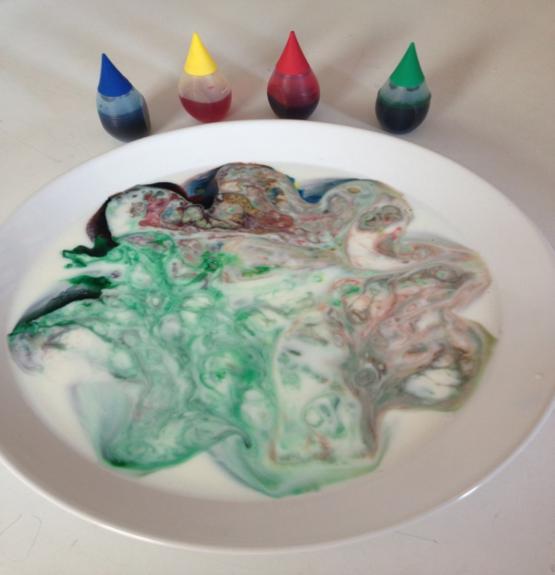Pour the milk into a bowl and drop a few drops of food coloring onto the surface of the milk. A drop of washing-up liquid is placed in the middle of the drops of color. What happens and why?
To understand what happens, you need to take a closer look at the composition of milk. Milk consists of 87% water and 13% dry matter. This dry matter is made up of 9 % non-fat dry matter and 4 % fat. The non-fat solids contain proteins (3.3 %), lactose (4.8 %) and minerals/vitamins (0.75 %). The milk fat is not freely present in the milk, but is distributed in small droplets in the water (emulsified) and surrounded by a complex thin shell, the so-called fat globule membrane. The average diameter of these fat globules is 2-6 μm. Through the process of homogenization, the fat globules can even be "crushed" to a diameter of less than 1 µm.
The fat globule membrane prevents these small particles from "flowing together" and leads to an even distribution of the fat globules in the aqueous phase. If you drip the food coloring onto the milk, it floats to the top because the milk is also denser than the food coloring. What happens if you add a drop of washing-up liquid?
We want to answer this question in a small experiment and show how the milk comes to life.

